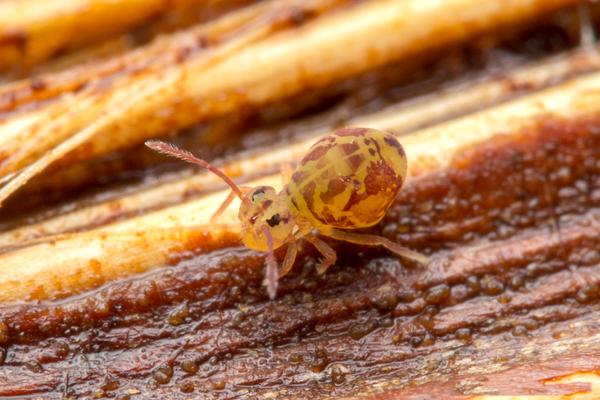Springtails in Turf
en Español / em Português
El inglés es el idioma de control de esta página. En la medida en que haya algún conflicto entre la traducción al inglés y la traducción, el inglés prevalece.
Al hacer clic en el enlace de traducción se activa un servicio de traducción gratuito para convertir la página al español. Al igual que con cualquier traducción por Internet, la conversión no es sensible al contexto y puede que no traduzca el texto en su significado original. NC State Extension no garantiza la exactitud del texto traducido. Por favor, tenga en cuenta que algunas aplicaciones y/o servicios pueden no funcionar como se espera cuando se traducen.
Português
Inglês é o idioma de controle desta página. Na medida que haja algum conflito entre o texto original em Inglês e a tradução, o Inglês prevalece.
Ao clicar no link de tradução, um serviço gratuito de tradução será ativado para converter a página para o Português. Como em qualquer tradução pela internet, a conversão não é sensivel ao contexto e pode não ocorrer a tradução para o significado orginal. O serviço de Extensão da Carolina do Norte (NC State Extension) não garante a exatidão do texto traduzido. Por favor, observe que algumas funções ou serviços podem não funcionar como esperado após a tradução.
English
English is the controlling language of this page. To the extent there is any conflict between the English text and the translation, English controls.
Clicking on the translation link activates a free translation service to convert the page to Spanish. As with any Internet translation, the conversion is not context-sensitive and may not translate the text to its original meaning. NC State Extension does not guarantee the accuracy of the translated text. Please note that some applications and/or services may not function as expected when translated.
Collapse ▲General Information
Springtails are in a primitive order (Collembola) of insects in which the adults have no wings and have internal mouthparts. Springtails are so-called because they have a unique structure, the furcula, that allows them to jump for considerable distance relative to their tiny size.
Springtails are very common and abundant native insects, but they are seldom observed because of their small size and because most of them live in concealed habitats. A few species have been noted as pests in greenhouses, mushroom cellars, or on certain crops in other parts of the world. Most of the time springtails are harmless. As decomposers, they are important to the garden and yard ecology. They are sometimes found on the medium surface of potted plants and in greenhouses.
Description
Most species are barely visible without a hand lens. Some species are silvery or white whereas others may be light purple, spotted, brown, or black. Some species are slender and some are almost spherical. Springtails have antennae, six legs, a furcula, and they lack wings and have no external mouthparts. Most species are not heavily scleritized. They are seldom observed because of their small size and the fact that most of them live in concealed habitats.
Biology
Springtails are most often noticed in yards during the spring. Most species live in the soil or in leaf mold under bark and decaying logs, and damp situations with plenty of organic matter. Males attach a tiny spermatophore on a stalk attached to soil particles. Females straddle the spermatophores and work them into a genital opening. Eggs are laid later singly or in batches that the female sometimes covers. Young springtails molt at least four times before reaching the adult stage. Adults continue to molt from time to time but do not seem to increase in size. Most springtails feed on decaying organic matter but a few are predaceous on other springtails, and fewer actually damage plants. Rarely springtails may become exceedingly abundant and may congregate in heaps several inches high on driveways, sidewalks and poolsides. Springtails are also called "snowfleas" as they sometimes are noticed hopping across snow. Springtails do not bite.
Control
Because springtails do no damage around the home or even inside, insecticide applications are really not needed. In the rare case where springtails become so abundant that they rick up in heaps, they can be dispersed with a stream of water from a garden hose.
Other Resources
- Cold-weather Acrobats. Esposito, K. 1998. Wisconsin Natural Resources Magazine.
- Springtails. Hahn, J. and S. Kells. 2015. University of Minnesota Extension. Garden Insects.
- Springtails, Household Pests. Waldvogel, M. and P. Alder. 2018. NC State Extension Publications
- The Entoganthous Hexapods. Wallace, M. M. H. and I. M. Mackerras. 1970. pp. 205-216 In The Insects of Australia. Melbourne Univ. Press. 1029 pp.
- 2018 Pest Control for Professional Turfgrass Managers. Bowman, D. et al. 2017. NC State Extension Publication AG-408. 81 pp.
- Extension Plant Pathology Publications and Factsheets
- Horticultural Science Publications
- North Carolina Agricultural Chemicals Manual
For assistance with a specific problem, contact your local Cooperative Extension Center




